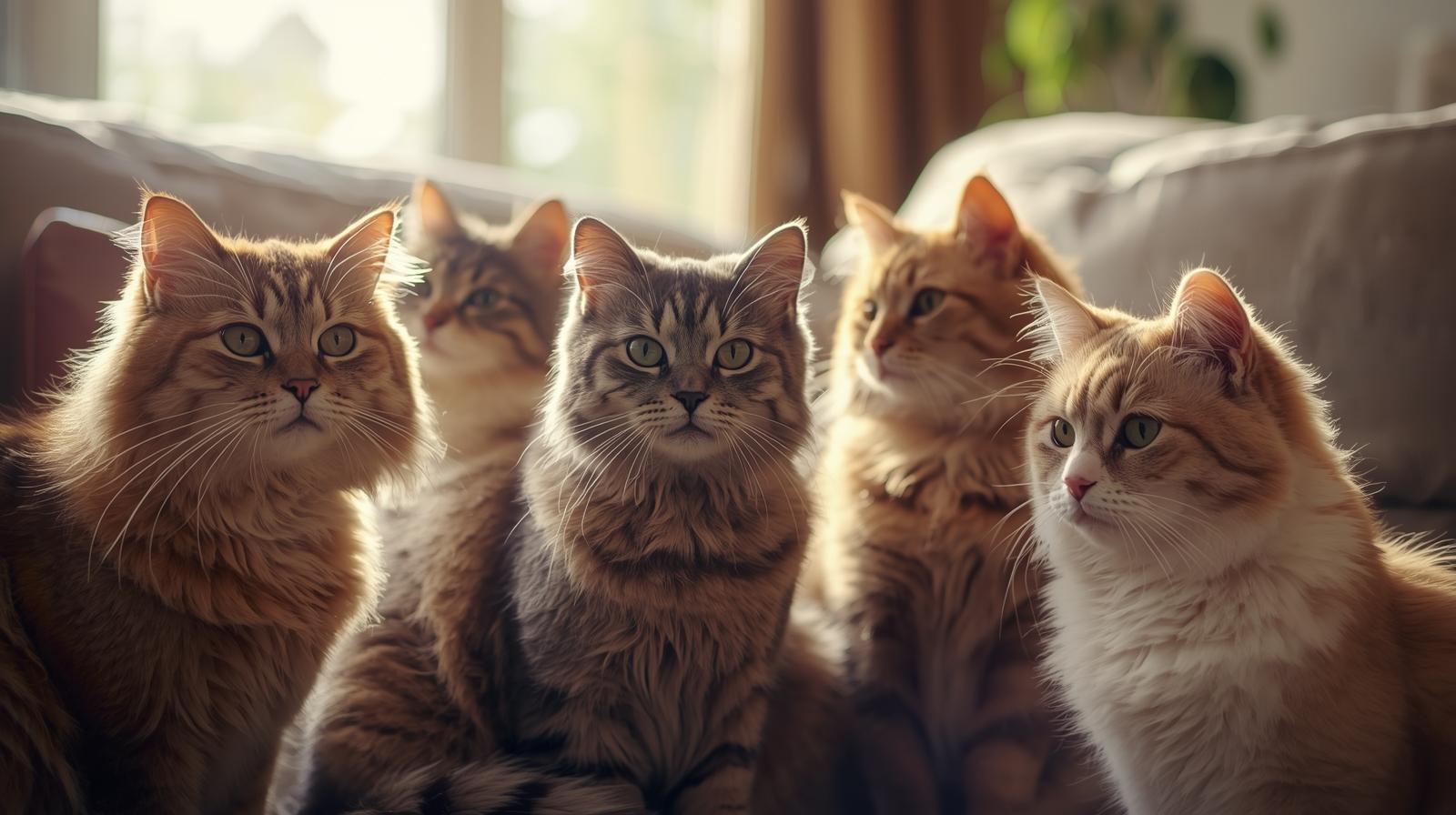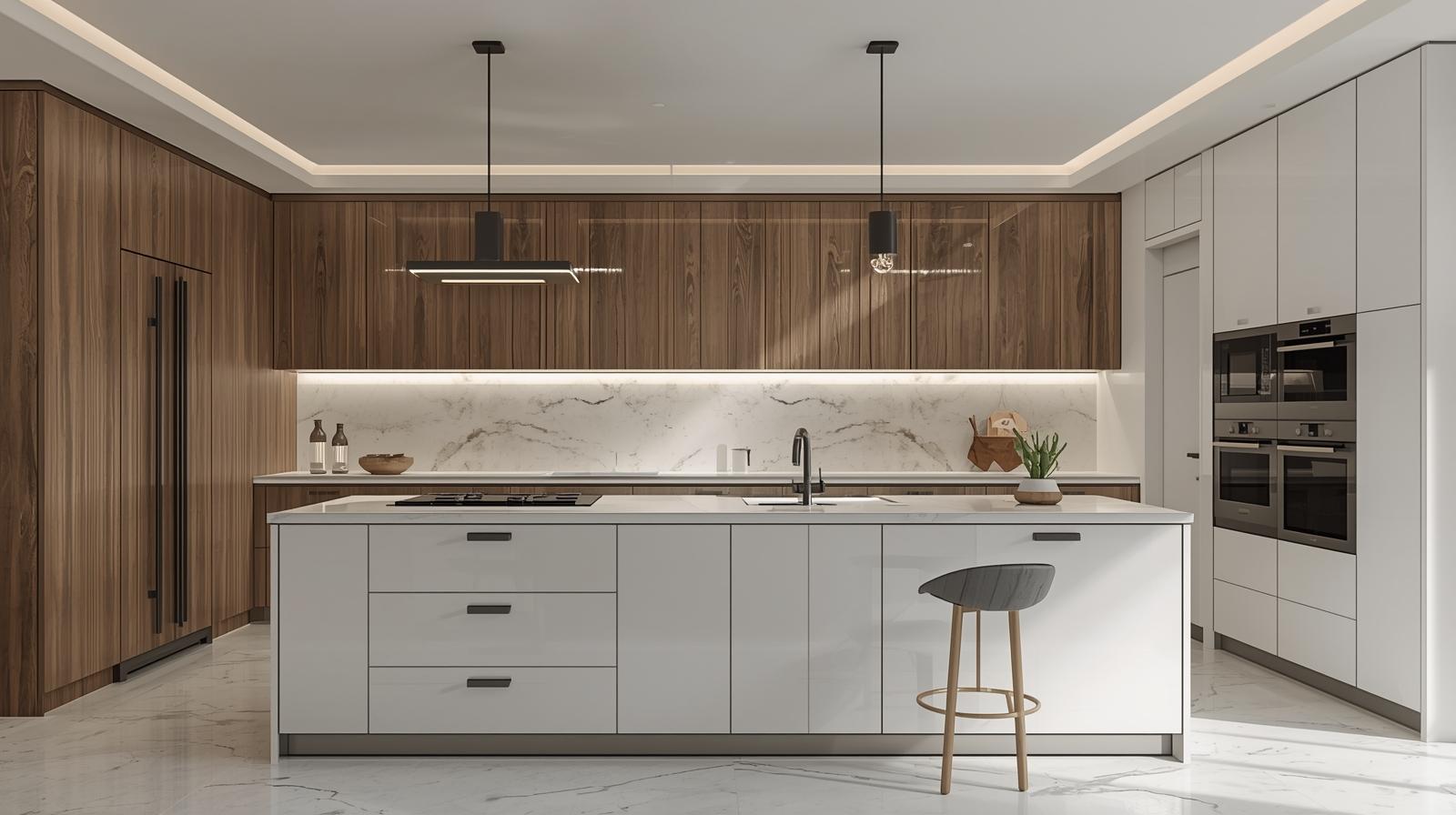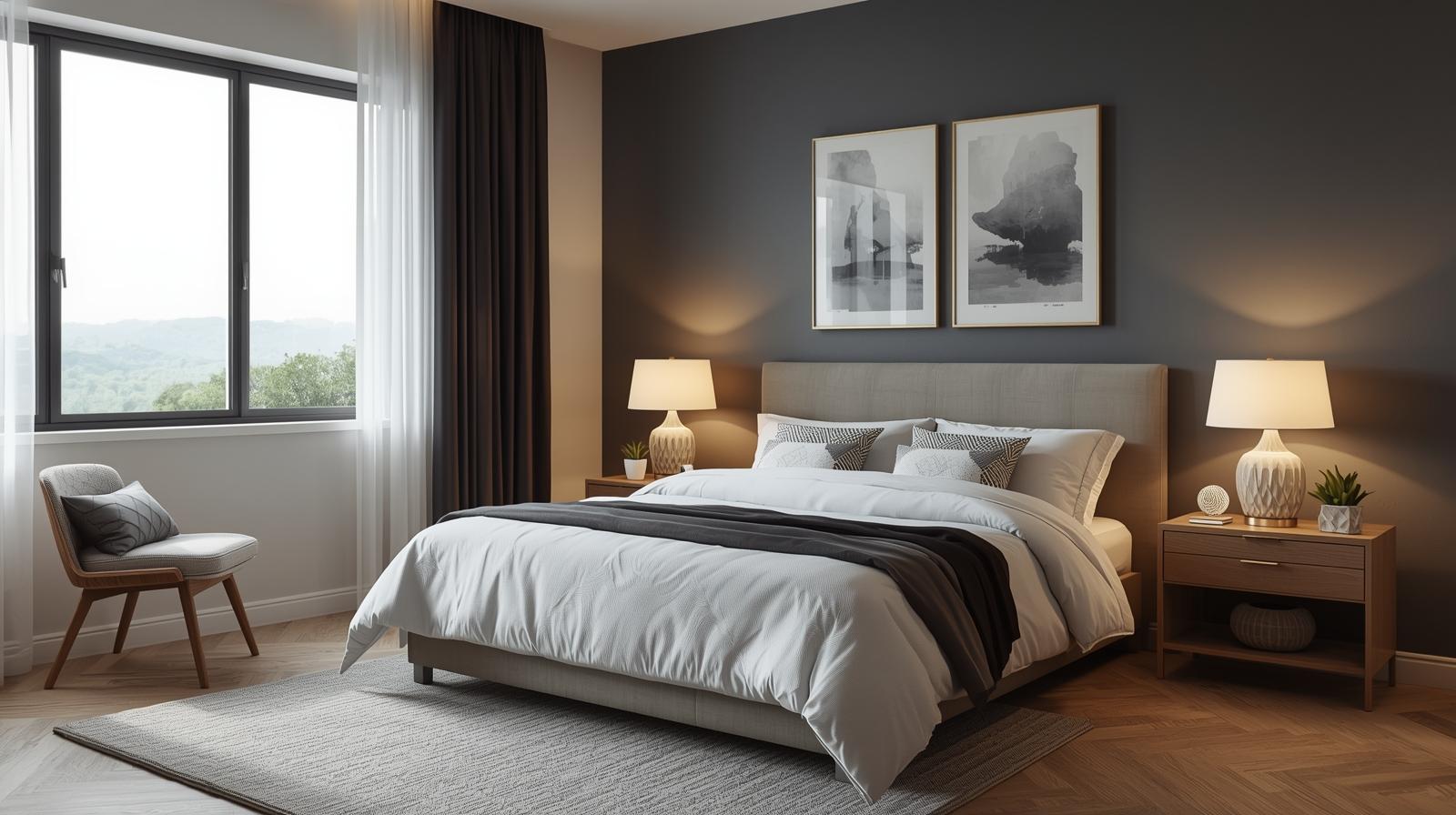
Domestic cats have captivated human hearts for thousands of years, evolving from wild hunters into beloved companions that grace millions of homes worldwide. These elegant creatures combine independence with affection, athleticism with leisure, and mystery with familiarity in ways that make them endlessly fascinating.
A Brief History of Domestication
The relationship between humans and cats began approximately 10,000 years ago in the Fertile Crescent, where wildcats (Felis silvestris) were attracted to early agricultural settlements by the abundance of rodents feeding on stored grain. Unlike dogs, which were actively domesticated through selective breeding for specific tasks, cats essentially domesticated themselves. They provided pest control services while maintaining much of their wild independence, creating a mutually beneficial relationship that has endured through millennia.
Ancient Egyptians elevated cats to divine status, worshipping the cat goddess Bastet and mummifying their feline companions for the afterlife. From Egypt, cats spread throughout the Roman Empire and eventually across the globe, adapting to diverse climates and cultures while retaining their core characteristics of grace, agility, and enigmatic charm.
Physical Beauty and Characteristics
The domestic cat’s physical beauty is undeniable, combining sleek musculature with soft fur, expressive eyes, and elegant proportions. Adult cats typically weigh between 8 and 12 pounds,domestic cats though this varies significantly by breed, with some reaching over 20 pounds while others remain petite at under 6 pounds.
Their coat patterns display remarkable variety. Solid colors range from pristine white to deep black, with every shade of gray, cream, orange, and brown in between. Tabby patterns feature distinctive stripes, swirls, or spots in classic, mackerel, spotted, and ticked variations. Pointed patterns, made famous by Siamese cats, create dramatic contrasts with darker extremities against lighter bodies. Calico and tortoiseshell cats display patchwork combinations of colors, almost exclusively appearing in females due to genetic factors linked to the X chromosome.
Cat eyes possess an otherworldly quality, capable of appearing luminous in low light thanks to the tapetum lucidum, a reflective layer behind the retina.domestic cats Eye colors span a spectrum including green, gold, copper, blue, and odd-eyed combinations. Their elliptical pupils can dilate dramatically to capture maximum light in darkness or narrow to slits in bright conditions, contributing to their exceptional vision.
The feline body is a masterpiece of evolutionary engineering. Their flexible spine allows them to twist mid-air and land on their feet through the “righting reflex.” Retractable claws stay sharp and protected when not in use. Powerful hind legs enable jumps of up to six times their body length. Their sensitive whiskers detect air currents and navigate tight spaces, while their acute hearing picks up ultrasonic frequencies that escape human detection.
Popular Breeds and Their Distinctive Beauty
The Cat Fanciers’ Association recognizes over 40 distinct breeds,domestic cats each with unique characteristics that appeal to different preferences.
Persian cats epitomize luxury with their long, flowing coats and flat faces. Their round eyes and sweet expressions have made them one of the most popular breeds for decades, though their grooming requirements are substantial.
Maine Coons stand as gentle giants of the cat world, with males often exceeding 18 pounds. Their tufted ears, bushy tails, and rugged appearance suggest their origins in the harsh New England climate, while their dog-like personalities and chirping vocalizations endear them to families.
Siamese cats showcase elegance through their svelte bodies, wedge-shaped heads, and striking blue almond eyes. Their color-point pattern and highly vocal, social nature make them unmistakable and deeply engaging companions.
Bengal cats bring wild beauty into domestic settings with their spotted or marbled coats reminiscent of leopards. Their athletic builds and energetic personalities reflect their Asian leopard cat ancestry, though they are fully domesticated and affectionate.
Ragdolls earned their name by going limp when held, demonstrating extreme docility. These large, blue-eyed cats have semi-long, silky coats and placid temperaments that make them ideal for families with children.
Scottish Folds charm with their unique folded ears caused by a cartilage mutation. Their round faces and owl-like appearance, combined with sweet dispositions, have made them increasingly popular despite some health concerns related to the fold gene.
Sphynx cats defy conventional feline beauty with their hairless bodies, yet their wrinkled skin, large ears, and affectionate personalities create devoted followings. Their warmth-seeking behavior and lack of shedding appeal to many adopters.
Behavior and Personality
Cats possess complex personalities that blend independence with deep attachment to their human families. Unlike dogs, they are not pack animals but rather solitary hunters that have adapted to social living. This duality manifests in their tendency to seek attention on their own terms while forming strong bonds with their chosen humans.
Their communication system is sophisticated, employing vocalizations,domestic cats body language, and scent marking. Purring typically indicates contentment but can also signal pain or distress. Meowing is largely reserved for human interaction, as adult cats rarely meow at each other.domestic cats Slow blinks represent trust and affection, often called “cat kisses.” Tail position reveals mood, from the confident vertical tail of a happy cat to the lashing tail of an irritated one.
Play behavior remains strong throughout their lives, serving both as exercise and mental stimulation. Hunting instincts drive their fascination with small moving objects, making interactive play essential for indoor cats. Their crepuscular nature means they are most active during dawn and dusk, sometimes leading to nighttime energy bursts that surprise unprepared owners.
Grooming occupies a significant portion of a cat’s waking hours. This self-cleaning behavior not only maintains their coat but also regulates body temperature, distributes natural oils, and provides comfort. Mutual grooming between cats or between cats and humans strengthens social bonds.
Health and Longevity
With proper care, domestic cats commonly live 15 to 20 years, with some reaching their mid-twenties. Indoor cats generally live longer than outdoor cats, protected from traffic,domestic cats predators, diseases, and other hazards.
Regular veterinary care is essential, including annual checkups, vaccinations, and dental care. Common health issues include dental disease, obesity, diabetes, kidney disease, and hyperthyroidism. Spaying and neutering provide health benefits beyond population control, reducing risks of certain cancers and eliminating reproductive-related behaviors.
Nutrition plays a crucial role in feline health. As obligate carnivores, cats require animal protein and specific nutrients like taurine that they cannot synthesize themselves. Quality commercial cat foods are formulated to meet these needs, though some owners explore raw or home-cooked diets under veterinary guidance.
The Cat-Human Bond
The relationship between cats and humans is unique in the animal kingdom. Cats have developed specialized behaviors for interacting with humans,domestic cats including the aforementioned meowing and the practice of bringing “gifts” of prey to their owners.domestic cats Research suggests that cats recognize their owners’ voices and respond to human emotional cues, though they may choose not to overtly display this recognition.
The therapeutic benefits of cat companionship are well-documented. Petting a cat can lower blood pressure and reduce stress hormones.domestic cats Their purring produces vibrations at frequencies associated with healing and pain reduction. For many people, especially those living alone or dealing with mental health challenges, cats provide crucial emotional support and routine.
Cats in Culture and Art
Cats have inspired artists, writers, and filmmakers throughout history. Ancient Egyptian art prominently featured cats in hieroglyphics, sculptures, and paintings.domestic cats Japanese culture gave us the iconic Maneki-neko or “beckoning cat,” believed to bring good fortune.domestic cats The internet age has elevated cats to unprecedented cultural prominence, with cat videos and memes dominating social media.
Literature is rich with feline characters, from Lewis Carroll’s Cheshire Cat to T.S. Eliot’s “Old Possum’s Book of Practical Cats,” which inspired the musical “Cats.” Modern authors continue to feature cats as companions, guides, and symbols of independence and mystery.
Care and Enrichment
Providing optimal care for cats extends beyond food and water. Environmental enrichment is essential for mental and physical health. This includes vertical spaces for climbing,domestic cats window perches for bird-watching, scratching posts for claw maintenance and territorial marking, and interactive toys that engage hunting instincts.
Litter box management is critical, with general recommendations of one box per cat plus one extra, cleaned daily and completely changed weekly. Location, type of litter, and box style all influence a cat’s willingness to use the box consistently.
Social needs vary by individual, but most cats benefit from regular interaction, whether through play, grooming, or simply sharing space with their humans. Multi-cat households require careful introduction and adequate resources to prevent stress and conflict.
The Future of Feline Companionship
As our understanding of cat behavior and needs deepens through ongoing research, we continue to improve how we care for these magnificent creatures. Advances in veterinary medicine extend lifespans and enhance quality of life. Greater awareness of the importance of indoor housing, environmental enrichment, and positive reinforcement training is creating better lives for cats worldwide.
The beauty of domestic cats lies not only in their physical appearance but in their complex personalities, their graceful movements, and the unique bonds they form with humans who respect their independence while cherishing their affectiondomestic cats. Whether curled in a sunbeam, stalking a toy mouse, or purring contentedly in a lap, cats embody a perfect blend of wild spirit and domestic comfort that continues to enchant us after ten thousand years of coexistence.
Detailed Characteristics of Popular Cat Breeds
BreedOriginWeight RangeCoat LengthCoat Colors/PatternsEye ColorTemperamentGrooming NeedsSpecial FeaturesLifespanPersianIran (Persia)7-12 lbsLong, thick, luxuriousAll colors and patternsBlue, copper, green, odd-eyedCalm, gentle, affectionateDaily brushing requiredFlat face, round eyes, flowing coat12-17 yearsMaine CoonUnited States (Maine)10-25 lbsLong, shaggy, water-resistantVarious colors and patternsGold, green, copperFriendly, playful, dog-likeWeekly brushingTufted ears, bushy tail, chirping sounds12-15 yearsSiameseThailand (Siam)6-14 lbsShort, fine, silkyColor-point (seal, blue, chocolate, lilac)Deep blueVocal, social, intelligent, demandingMinimal, weekly brushingWedge-shaped head, large ears, very vocal12-20 yearsBengalUnited States8-15 lbsShort, soft, denseSpotted or marbled, brown/silver/snowGreen, goldActive, playful, athletic, curiousMinimal, weekly brushingWild appearance, loves water, highly energetic12-16 yearsRagdollUnited States10-20 lbsSemi-long, silky, plushColor-point, mitted, bicolorBlueDocile, affectionate, relaxed, gentleWeekly to bi-weekly brushingGoes limp when held, follows owners12-17 yearsBritish ShorthairUnited Kingdom9-18 lbsShort, dense, plushBlue most common, all colors availableCopper, gold, blue, greenCalm, easygoing, independentWeekly brushingRound face, chubby cheeks,domestic cats teddy bear appearance12-20 yearsSphynxCanada6-12 lbsHairless (fine down)All colors/patterns visible on skinAll colorsEnergetic, affectionate, attention-seekingWeekly bathing, ear cleaningWrinkled skin, large ears, warm to touch8-14 yearsAbyssinianEthiopia/Egypt6-10 lbsShort, fine, tickedRuddy, red, blue, fawnGold, green, hazelActive, playful, intelligent, curiousWeekly brushingTicked coat pattern, large ears, athletic build9-15 yearsScottish FoldScotland6-13 lbsShort or longAll colors and patternsVarious colorsSweet, calm,domestic cats adaptable, playfulWeekly brushing (short), daily (long)Folded ears, round face, owl-like appearance11-15 yearsRussian BlueRussia7-12 lbsShort, dense, plushBlue-gray with silver tipsVivid greenGentle, quiet, intelligent, shy with strangersWeekly brushingSilver-blue coat, emerald eyes, smiling expression15-20 yearsBirmanMyanmar (Burma)10-15 lbsSemi-long, silkyColor-point with white pawsDeep blueGentle, social, calm, affectionateWeekly brushingWhite "gloves" on paws, blue eyes, gentle nature12-16 yearsOriental ShorthairUnited States/UK8-12 lbsShort, fine, glossyOver 300 color combinationsGreen (except white cats)Vocal, social, playful, demandingWeekly brushingLarge ears, sleek body, related to Siamese12-15 yearsNorwegian Forest CatNorway12-16 lbsLong, thick, double coatVarious colors and patternsGreen, gold, copperFriendly, independent, patientWeekly brushingWater-resistant coat, tufted paws, sturdy build14-16 yearsDevon RexUnited Kingdom6-9 lbsShort,domestic cats curly, softAll colors and patternsAll colorsPlayful, mischievous, affectionate, people-orientedMinimal, occasional gentle brushingCurly coat, large ears, pixie-like face9-15 yearsAmerican ShorthairUnited States10-15 lbsShort, thick, denseOver 80 color combinationsVarious colorsEasygoing, adaptable, playful, good hunterWeekly brushingRound face, muscular build, silver tabby most iconic15-20 years
This table provides a comprehensive overview of popular breeds,domestic cats allowing potential cat owners to compare characteristics and find the perfect feline companion to match their lifestyle and preferences.





